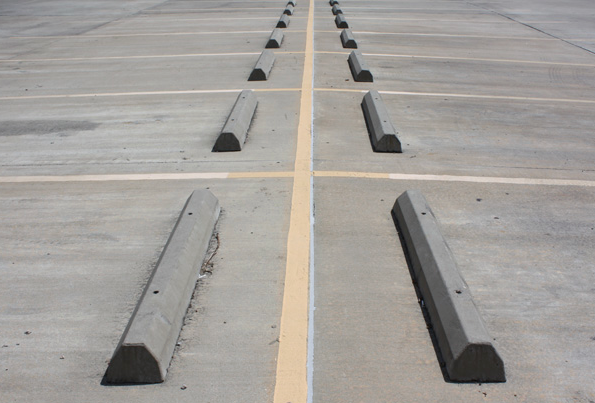By David Swedelson, Condo Lawyer and HOA Attorney; Senior Partner at SwedelsonGottlieb, Community Association Attorneys
 The Daily Journal, a newspaper for attorneys, reports weekly on various verdicts and settlements. I read those reports, as it keeps me up on what kind of cases are being filed and what kind of verdicts and settlements are being made.
The Daily Journal, a newspaper for attorneys, reports weekly on various verdicts and settlements. I read those reports, as it keeps me up on what kind of cases are being filed and what kind of verdicts and settlements are being made.
Recently, I read a report of a settlement in a lawsuit where a woman sued a property owner for damages she suffered after tripping and falling over a concrete parking barrier in a parking lot. Although the case did not involve a community association parking lot, it easily could have. The fact is, some our condo clients have been sued by owners, residents or guests after they likewise tripped over a concrete parking barrier, claiming that it was a dangerous condition because they could not distinguish the parking barrier from the asphalt parking lot surface.
In the report about the case I referenced above, the injured woman settled her claims against the property owner for $500,000. While most community associations have at least $1,000,000 liability insurance, imagine if the injuries were so severe that the injured homeowner or resident was claiming damages in excess of one million dollars. And imagine the impact on a community association’s insurance coverage, both the ability to get insurance and the cost of a liability policy after their carrier has paid out $500,000 in a liability settlement.
In the case referenced above, the report (follow this link to read the report) indicates that the injured plaintiff alleged that the parking barrier was “camouflaged”, that the barrier and the asphalt parking lot surface blended together and therefore the barrier was not noticeable. She also alleged that the overall condition of the barrier indicated that the hazard had existed for a substantial amount of time, causing a danger on the premises. I suspect that these same conditions exist at many California community associations.
As I was preparing this blog post and looking for photographs of concrete parking barriers, one of the first I came upon was the one I used (see above). I’m not sure if it’s the nature of the lighting, but as you can see, the concrete barriers are the same or similar color as the parking lot surface.
So how does a community association avoid liability? The board and/or management should inspect the parking areas to determine if the parking barriers are in good condition, and determine if, as a result of age, they have gotten darker such that they blend in more with the asphalt that may have gotten lighter. Perhaps power washing the parking lot and the concrete parking barriers will bring back some of the original color so that there is a distinct differentiation between the barrier and the asphalt parking lot surface.
I have been advised by some clients that when faced with these kinds of claims, they have painted yellow stripes on their parking barriers or painted the top yellow so that it can be easily distinguished from the asphalt parking service. Consider utilizing a reflective paint so that at night the barrier will be more noticeable. Taking steps like these can help eliminate lawsuits, potential liability, and will help ensure that the association can find insurance coverage at a reasonable cost. Be careful out there.
David Swedelson is a community association legal expert with the firm of SwedelsonGottlieb that represents California Community Associations. David can be contacted via email: dcs@sghoalaw.com
 HOA Law Blog
HOA Law Blog


